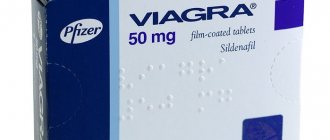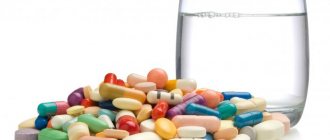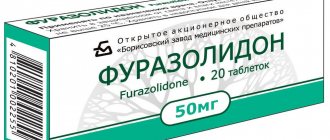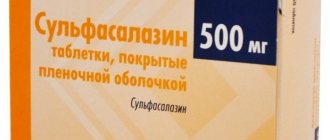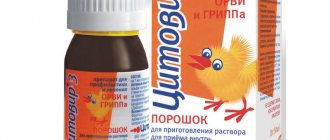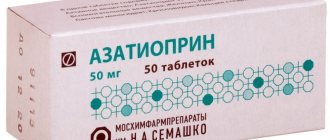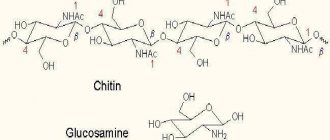Tubazid is a drug used to treat pulmonary tuberculosis and its extrapulmonary forms.
The active substance of Tubazid is isoniazid, a chemical substance that is a derivative of nicotinic acid. The drug exhibits activity against Mycobacterium tuberculosis.
After taking a tablet or injecting Tubazid, it is distributed throughout most human organs and tissues, creating effective concentrations of the active substance in them. It is important that the effect of the drug extends to intracellular microorganisms.
When pregnant women take the drug, the drug passes through the placenta and enters the bloodstream of the fetus. In addition, isoniazid passes into breast milk.
When taken simultaneously with other anti-tuberculosis drugs, mutual enhancement of effectiveness is observed.
Brief description of the drug
Let us immediately clarify that “Isoniazid” for tuberculosis is not prescribed in all cases. It is most effective at the initial stage of the disease, when the body has not yet had time to suffer significantly from Koch’s bacillus. As you know, it is she who serves as the causative agent of the disease. If treatment is started on time, the drug will be able to destroy actively developing rods, as well as mycobacteria located inside and outside the cells.
It is noteworthy that until now, pharmacists producing such a product cannot accurately describe the mechanism of its effect on Koch’s bacillus. It is assumed that the drug inhibits the intracellular synthesis of bacteria. This is what stops their reproduction and the course of the disease.
It is worth considering that doctors often prescribe Isoniazid for preventive purposes. It is sometimes prescribed to people who have successfully undergone treatment for tuberculosis. The drug is also taken by patients with a positive Mantoux test. This number includes children and adolescents.
Release forms
When treating with Isoniazid, specialists use different forms of its release. The doctor determines what is needed depending on the patient’s age and the course of the disease. We will briefly list all known forms of this popular and effective drug:
- Isoniazid tablets. One capsule usually contains 100, 200 or 300 milligrams of the active substance. Tablets are usually placed in 10 pieces in one blister. The package may contain 2, 5 and 10 blisters. Since treatment with the drug lasts for quite a long time, manufacturers provide more capacious packaging. For example, jars are packed with 100, 500 and 1000 tablets. Capsules in a dosage of 300 milligrams are packaged in 100 pieces in jars. The manufacturer also packages the medicine in bags. Their maximum quantity in this case reaches 1000 tablets in a container.
- Injection. It is ten percent, one ampoule contains 5 milligrams of the active substance. Usually there are from 5 to 10 vials in one package.
- Syrup. This form involves packaging in dark glass bottles. Each contains 200 milliliters of the drug. In five milliliters of syrup, the concentration of the active substance does not exceed 100 milligrams.
- Powder. Its concentration is usually identical to the tablet form; in this form the medicine is prescribed mainly to children. But even in this case it is used extremely rarely.
If we talk about the side effects of Isoniazid, they do not change depending on the form in which the drug is used by the patient. Therefore, it is worth listening to the opinion of the attending physician and focusing on him.
Release form and composition
Isoniazid is available in the form of tablets, powder and solution for intravenous and intramuscular administration.
Isoniazid tablets are available in blisters of 10 pcs., in a cardboard box there are 10 blisters, or in a dark glass jar of 100 pcs.
Isoniazid powder is placed in plastic bags of 25 kg or 50 kg.
Injection solution 10% Isoniazid is sold in ampoules of 5 ml, which are placed in packages of 5 or 10 pcs.
The active substance of the drug Isoniazid is isoniazid.
Tablets contain isoniazid (100 mg, 200 mg or 300 mg) and excipients: polysorbate 80, calcium stearate monohydrate, crospovidone, potato starch.
1 ml of Isoniazid solution contains 100 mg of isoniazid.
Composition of the drug
Depending on the dosage, one tablet of the drug contains from 100 to 300 mg of isoniazid. It is this that is the active substance of the drug. The following components are used as auxiliary components:
- potato starch;
- stearic acid.
The tablets are flat in shape and white in color. There are marks on the surface for ease of division.
One milliliter of injection solution contains 100 mg of isoniazid. It is worth considering that injections can be given both intravenously and intramuscularly. It depends on the doctor's orders.
How to take it correctly for tuberculosis?
Isoniazid is taken as follows:
- Oral.
- Intramuscularly.
- Intravenously.
- Intracaverous.
- Inhalation.
Isoniazid tablets are taken after meals. You should not take the medicine during breakfast, lunch and dinner, as its absorption is reduced.
Intravenous and intramuscular administration of the drug is practiced against the background of chronic pathologies or in case of poor tolerance. After the injection, the patient is prescribed 60-75 minutes of bed rest.
Inhalation and intracaverous administration of the drug is indicated for certain forms of tuberculosis. The decision on one or another method of administering the drug is made by the attending physician.
For children
This drug is prescribed to minors for therapeutic and preventive purposes. The dosage is selected individually. More detailed information is presented in the plate.
| Medicine form | How to use | Duration of admission |
| Tablets for tuberculosis Isoniazid | 5-15 mg/kg of child’s weight. The number of doses per day is 2. The maximum dosage per day is 500 mg. | Determined on an individual basis. |
| Injections | 10-15 mg/kg child’s body weight. Pyridoxine is prescribed at the same time. The optimal dosage is 10 mg/100 mg Isoniazid. | Determined individually. |
Side effects in children are rare. Common side effects include nausea, diarrhea, and headaches. The following side effects are less common:
- allergy;
- convulsive muscle contractions;
- memory impairment;
- psychosis.
In children, tuberculosis often develops in a latent form.
Therefore, prophylactic use of this drug is strictly required.
If a child has already been diagnosed with tuberculosis, treatment with Isoniazid lasts longer. In this case, the drug is prescribed in a higher dosage.
For adults
Detailed information about the dosage regimen for this medicine is provided in the tablet.
| Medicine form | How to use | Duration of admission |
| Pills | 600-900 mg/24 hours. Number of techniques - 1-3. The maximum daily dosage is 900 mg. | Depends on the form of the pathology, the presence of concomitant diseases and the severity of the clinical picture. Concomitant use of other anti-tuberculosis medications is permitted. |
| Injections | 10% solution at 5-12 mg/kg per 24 hours. It is possible to increase the dosage to 15 mg/kg body weight. 30 minutes after the administration of this medicine, it is recommended to inject 100-125 mg of vitamin B6 into the muscle. This helps reduce side effects. The use of 1.0-1.5 g/24 hours of glutamic acid is also prescribed. | 3-4 months. |
| Inhalation administration | 10% solution of Isoniazid, calculated at 10-15 mg/kg body weight. Number of inhalations - 1-2. The product is taken every day. | Up to six months. |
The prophylactic dosage is 6-9 mg/kg. Number of appointments - 2. Course duration - 90 days.
Indications for use
We have already mentioned that the drug is prescribed in different cases. We list the most common indications for the use of Isoniazid:
- Active forms of tuberculosis, regardless of its location in the body. Judging by the reviews of experts, the drug has proven to be very effective in the initial stages of the disease. If you start taking it immediately after infection, the chances of rapid healing increase several times.
- Tuberculous meningitis. Usually in such a case, doctors prescribe not only Isoniazid, but also other drugs. As part of complex therapy, it is very effective and helps to cope with the disease.
- Persons who have close contact with tuberculosis patients. If your close relative suffers from this disease, then you will most likely be prescribed this particular drug as a preventive measure.
- Children, adolescents and adults who have a positive reaction to the Mantoux test. For children under four years of age, a spot measuring 10 millimeters is considered dangerous, for adults – more than five millimeters.
- Children and adolescents who were infected with Koch's bacillus for the first time, as well as those who simultaneously suffered severe infectious diseases. These include pneumonia or measles, for example.
- Patients diagnosed with HIV.
- Persons engaged in livestock farming and due to their occupation are forced to come into contact with livestock sick with tuberculosis.
- For residual forms of tuberculosis.
It is worth considering that before prescribing the drug, the patient undergoes a thorough examination. This includes an x-ray examination and consultation with a phthisiatrician. Only after this the doctor decides whether to prescribe Isoniazid. By the way, he always describes the side effects of the drug to his patients.
Instructions:
Clinical and pharmacological group
06.051 (Anti-tuberculosis drug)
pharmachologic effect
First line antituberculosis drug. Has a bactericidal effect. Isoniazid is active against extra- and intracellular Mycobacterium tuberculosis, primarily against actively dividing ones. The exact mechanism of its action is unknown. It is assumed that it is associated with the suppression of the synthesis of mycolic acids, which are part of the cell wall of mycobacteria.
Pharmacokinetics
After oral administration, it is quickly absorbed from the gastrointestinal tract. When taken with food, absorption and bioavailability are reduced. Widely distributed in all tissues and body fluids. Plasma protein binding is very low (0-10%). Metabolized in the liver. It is excreted in urine, a small amount is excreted in feces.
Dosage
The dose is set individually, depending on the nature and form of the disease.
Orally for adults and adolescents - 300 mg 1 time/day or 15 mg/kg/day 2-3 times a week (as determined by the treatment regimen), children - 10-20 mg/kg 1 time/day or 20-40 mg/kg 2-3 times a week (as determined by the treatment regimen).
Adults and adolescents are administered intramuscularly at 5 mg/kg 1 time/day or 15 mg/kg 2-3 times/week, for children - 10-20 mg/kg 1 time/day or 20-40 mg/kg 2-3 times a week.
The duration of treatment is determined individually.
It is administered intracavernosally in a daily dose of 10-15 mg/kg. For inhalations - 5-10 mg/kg/day in 1-2 doses.
The maximum daily dose for adults when administered orally and intravenously is 300 mg.
Drug interactions
When used simultaneously with rifampicin, the risk of developing hepatotoxicity increases (especially in patients with impaired liver function).
When used simultaneously with paracetamol, the risk of developing hepatotoxicity increases, because isoniazid induces cytochrome P450, which leads to an increase in the content of toxic metabolites of paracetamol.
With the simultaneous use of isoniazid with carbamazepine or phenytoin, the metabolism of the latter is suppressed, which leads to an increase in their concentrations in the blood plasma and increased toxic effects.
Use during pregnancy and lactation
It is possible to use isoniazid during pregnancy and lactation (breastfeeding).
Isoniazid penetrates the placental barrier and is excreted in breast milk.
Side effects
From the central nervous system and peripheral nervous system: headache, dizziness; rarely - psychosis, euphoria, sleep disturbances, peripheral neuritis.
From the digestive system: nausea, vomiting, drug-induced hepatitis.
From the cardiovascular system: pain in the heart area.
From the endocrine system: very rarely - gynecomastia in men, menorrhagia in women.
Allergic reactions: skin rash, itching.
Indications
Treatment of all forms of active tuberculosis, incl. tuberculous meningitis (as part of combination therapy). Prevention of tuberculosis in persons who are in close contact with tuberculosis patients; in persons with a positive skin reaction (more than 5 mm) to tuberculin and radiological data indicating non-progressive tuberculosis; in children under 4 years of age with a positive reaction to tuberculin (more than 10 mm) and an increased risk of dissemination.
Contraindications
Epilepsy, history of seizures and poliomyelitis, impaired liver and/or kidney function, atherosclerosis.
special instructions
It is not recommended to use isoniazid in a dose of more than 10 mg/kg in severe forms of cardiopulmonary failure and/or arterial hypertension, coronary artery disease, widespread atherosclerosis, diseases of the nervous system, bronchial asthma, psoriasis, eczema in the acute phase, myxedema.
To avoid the rapid development of resistance to Mycobacterium tuberculosis, isoniazid is used in combination with other anti-tuberculosis drugs.
After the injection, the patient must remain in bed for 1-1.5 hours.
To reduce side effects, pyridoxine (orally or IM), or glutamic acid (orally), or thiamine (IM) is prescribed simultaneously with isoniazid.
It should be taken into account that isoniazid is metabolized in the liver by acetylation to inactive metabolites. The degree of acetylation is determined by genetic factors. Due to the unequal degree of metabolism, before using isoniazid, it is advisable to determine the rate of its inactivation by the content of the active substance in the blood and urine. In patients who experience rapid inactivation, isoniazid is used in higher doses.
Preparations containing ISONIAZID
• ISONIAZID tablets tab. 100 mg: 10, 20 or 100 pcs. • ISONIAZID tab. 100 mg: 20, 50 or 100 pcs. • PROTUBVITA tab., coated. film cover: 100, 500 or 1000 pcs. • PHTHIZOPIRAM B6 tab. 150 mg+500 mg+15 mg: 50, 100, 500 or 1000 pcs. • ISONIAZID tab. 300 mg: 50 or 100 pcs. • ISONIAZID tablets tab. 100 mg: 10, 20 or 100 pcs. • ISOCOMB® (ISOCOMB®) tab., coated. shell: 500 pcs. • ISONIAZID tab. 300 mg: 20 or 100 pcs. • ISONIAZID tab. 300 mg: 100 pcs. • ISONIAZID tablets tab. 300 mg: 10, 20 or 100 pcs. • ISO-EREMFAT tab., coated. coated, 150 mg+100 mg: 100, 10,000, 20,000, 30,000 or 40,000 pcs. • ISONIAZID tab. 100 mg: 100 pcs. • ISONIAZID tab. 200 mg: 20 or 100 pcs. • PROTUBETHAM tab. 150 mg+400 mg: 100, 500 or 1000 pcs. • ISONIAZID solution for injections 10% (ISONIAZID solution for injections 10%) solution for intravenous and intramuscular administration 500 mg/5 ml: amp. 5 or 10 pcs. • ISONIAZID solution for injection. 10% (500 mg/5 ml): amp. 10 pieces. • ISONIAZID tab. 200 mg: 20, 50 or 100 pcs. • ISONIAZID tab. 100 mg: 50 or 100 pcs. • REPIN B6 (REPIN B6) tab., coated. shell: 500 or 1000 pcs. • ISONIAZID tablets tab. 100 mg: 10, 20 or 100 pcs. • PROTUBETHAM tab. 300 mg+800 mg: 100, 500 or 1000 pcs. • PROTUBE-2 (PROTUB-2) tab., cover. film shell 100 mg+150 mg+10 mg: 100, 500 or 1000 pcs. • ISONIAZID tablets tab. 300 mg: 10, 20 or 100 pcs. • ISONIAZID tablets tab. 200 mg: 10, 20 or 100 pcs. • PROTUB-3 (PROTUB-3) tab., cover. film shell 150 mg+750 mg+225 mg: 100, 500 or 1000 pcs. • ISONIAZID tablets tab. 100 mg: 10, 20 or 100 pcs. • PROTUBE-2 (PROTUB-2) tab., cover. film shell 300 mg+450 mg+20 mg: 100, 500 or 1000 pcs. • ISONIAZID tablets tab. 200 mg: 10, 20 or 100 pcs. • TUBAVIT tab., coated. coated, 150 mg+100 mg+10 mg: 20, 30, 50, 100, 600, 800, 1000 or 1200 pcs. • ISONIAZID tab. 100 mg: 50, 100, 500 and 1000 pcs. • PROTUBPIR (PROTUBPIRA) tab. 150 mg+500 mg: 100, 500 or 1000 pcs. • ISONIAZID tablets tab. 200 mg: 10, 20 or 100 pcs. • COMBITUB tab., coated. film-coated: 60, 100 pcs. • ISONIAZID tab. 300 mg: 100 pcs. • ISONIAZID tablets tab. 100 mg: 10, 20 or 100 pcs. • FORECOX tab., coated. film-coated, 150 mg+400 mg+275 mg+75 mg: 60 and 100 pcs. • ISONIAZID tablets tab. 300 mg: 10, 20 or 100 pcs. • ISONIAZID tab. 300 mg: 20 or 100 pcs. • ISONIAZID tablets tab. 100 mg: 10, 20 or 100 pcs. • PROTUBE-2 (PROTUB-2) tab., cover. film shell 100 mg+150 mg+20 mg: 100, 500 or 1000 pcs. • ISONIAZID tablets tab. 200 mg: 10, 20 or 100 pcs. • FTIZOETHAM® (PHTHIZOETHAM) tab. 150 mg+400 mg: 100 pcs. • PROTUB-4 (PROTUB-4) tab., cover. film cover: 50, 100, 500 or 1000 pcs. • LEVOFLORIPIN® tablet, coated. film-coated: 50 pcs. • PHTHIZOPIRAM tab. 150 mg+500 mg: 100 pcs. • ISONIAZID tablets tab. 200 mg: 10, 20 or 100 pcs. • ISONIAZID tablets tab. 300 mg: 10, 20 or 100 pcs. • ISONIAZID solution for injections 10% (ISONIAZID solution for injections 10%) solution for intravenous and intramuscular administration 500 mg/5 ml: amp. 5 or 10 pcs. • ISONIAZID tablets tab. 100 mg: 10, 20 or 100 pcs. • ISONIAZID tab. 300 mg: 50 or 100 pcs. • PROTUBPIR (PROTUBPIRA) tab. 300 mg+750 mg: 100, 500 or 1000 pcs. • ISONIAZID solution for injection. 10% (500 mg/5 ml): amp. 10 pieces. • ISONIAZID solution for injections 10% (ISONIAZID solution for injections 10%) solution for intravenous and intramuscular administration 500 mg/5 ml: amp. 5 or 10 pcs. • ISONIAZID tab. 100 mg: 50 or 100 pcs. • ISONIAZID-DARNITSA solution for injection. 500 mg/5 ml: amp. 10 pieces. • ISONIAZID tab. 100 mg: 20 or 100 pcs. • ISONIAZID tab. 300 mg: 50 or 100 pcs. • LASLONVITA tab., coated. film cover: 100 pcs. • ISOPASK tab., coated. enteric film vol., 33.3 mg + 1.145 g: 100, 327 or 500 pcs. • ISONIAZID tablets tab. 300 mg: 10, 20 or 100 pcs. • ISONIAZID solution for injections 10% (ISONIAZID solution for injections 10%) solution for intravenous and intramuscular administration 500 mg/5 ml: amp. 5 or 10 pcs. • RIFACOMB tab., coated. coated, 150 mg+100 mg+10 mg: 100 pcs. • ISONIAZID tab. 300 mg: 100, 1000 or 5000 pcs. • ISONIAZID tablets tab. 100 mg: 10, 20 or 100 pcs. • ISONIAZID tablets tab. 300 mg: 10, 20 or 100 pcs. • ISONIAZID tab. 300 mg: 100 pcs. • ISONIAZID tab. 300 mg: 100 pcs. • PROTUB-4 PLUS (PROTUB-4 PLUS) tab., cover. film cover: 100, 500 or 1000 pcs. • ISONIAZID tablets tab. 200 mg: 10, 20 or 100 pcs. • ISONIAZID tab. 200 mg: 20, 50 or 100 pcs. • HIXOZID lyophilisate for preparation. solution for intrapleural administration and inhalation: 350 mg vial. 1, 10, 200, 500 or 1000 pcs. • ISONIAZID tablets tab. 200 mg: 10, 20 or 100 pcs. • COMBITUB tab., coated. film-coated: 60 or 100 pcs. • ISONIAZID tab. 200 mg: 50 or 100 pcs. • ISONIAZID tab. 100 mg: 20, 50 or 100 pcs. • ISONIAZID-FEREIN tab. 300 mg: 20 or 100 pcs. • ISONIAZID tablets tab. 300 mg: 10, 20 or 100 pcs. • ISONIAZID tab. 200 mg: 50 or 100 pcs. • FORECOX tab., coated. film-coated, 225 mg+750 mg+400 mg+150 mg: 60 pcs. • ISONIAZID tablets tab. 300 mg: 10, 20 or 100 pcs. • ISONIAZID (ISONIAZID) solution for intravenous and intramuscular administration 500 mg/5 ml: amp. 10 pieces. • ISO-EREMFAT tab., coated. coated, 300 mg+150 mg: 100, 10,000, 20,000, 30,000 or 40,000 pcs. • ISONIAZID tablets tab. 200 mg: 10, 20 or 100 pcs. • ISONIAZID tab. 300 mg: 20, 50 or 100 pcs. • ISONIAZID solution for injection. 10% (500 mg/5 ml): amp. 5 or 10 pcs. • COMBITUB tab., coated. film-coated: 60, 100 or 500 pcs. • ISONIAZID tablets tab. 200 mg: 10, 20 or 100 pcs. • FTIZOETHAM® B6 (PHTHIZOETHAM B6) tab. 150 mg+15 mg+400 mg: 50 pcs. • PROTUB-LOME tab., cover. film cover: 100, 500 or 1000 pcs. • ISONIAZID tablets tab. 100 mg: 10, 20 or 100 pcs. • MAC-PAS PLUS granules, coated. intestinalis. vol., 800 mg+23.2 mg/1 g: pack. 4.3 g 25, 50 or 100 pcs., pack. 5 g 10, 25, 50 or 100 pcs. • ISONIAZID tablets tab. 300 mg: 10, 20 or 100 pcs. • ISONIAZID tab. 300 mg: 20, 50 or 100 pcs. • ISONIAZID-FEREIN tab. 200 mg: 20 or 100 pcs. • ISONIAZID tablets tab. 100 mg: 10, 20 or 100 pcs. • ISONIAZID-FEREIN tab. 100 mg: 20 or 100 pcs. • ISOZIDE COMP. (ISOZID COMP.) tab., cover. coated, 300 mg+60 mg: 100, 10,000, 20,000, 30,000 or 40,000 pcs. • ISONIAZID tablets tab. 200 mg: 10, 20 or 100 pcs. • ISONIAZID solution for injection. 10% (500 mg/5 ml): amp. 5 or 10 pcs. • PROTUB-3 (PROTUB-3) tab., cover. film shell 75 mg+400 mg+150 mg: 100, 500 or 1000 pcs. • MAC-PAS PLUS granules, coated. intestinalis. vol., pineapple 800 mg+23.2 mg/1 g: pack. 100 g • ISONIAZID tablets tab. 200 mg: 10, 20 or 100 pcs. • ISONIAZID tablets tab. 300 mg: 10, 20 or 100 pcs. • ISONIAZID tablets tab. 100 mg: 10, 20 or 100 pcs. • ISOZID 200 tab. 200 mg: 100 pcs. • LOMECOMB® (LOMECOMB®) tab., coated. shell: 50 or 500 pcs. • ISONIAZID tab. 200 mg: 50, 100, 500 and 1000 pcs. • ISONIAZID tab. 300 mg: 100, 500 or 1000 pcs. • ISONIAZID tab. 150 mg: 50, 100, 500 and 1000 pcs. • ISONIAZID tablets tab. 300 mg: 10, 20 or 100 pcs. • ISONIAZID-AKOS tab. 300 mg: 100 pcs. • PROTUB-3 (PROTUB-3) tab., cover. film shell 300 mg+1000 mg+450 mg: 100, 500 or 1000 pcs.
Pharmacokinetics
Many patients are primarily concerned about the side effects of Isoniazid in adults and children indicated in the instructions. However, it is equally important to understand exactly how it acts in the human body.
Pharmacists claim that the drug is very quickly absorbed in the digestive tract. It is usually prescribed after a meal, since its digestion significantly slows down the effect of the drug. In the period from one to four hours, the maximum concentration of the substance in the body is reached. It is noteworthy that after a single dose, isoniazid is active in human blood for up to 24 hours. All this time he fights with Koch's wand, and therefore is very effective after the first tablet.
It is worth considering that the drug penetrates perfectly into all tissues of the body. It can also cross the placental barrier and enter breast milk. Many patients attribute this to the side effects of Isoniazid tablets.
Side effects
The table shows all possible side effects caused by Isoniazid.
| Blood system, heart, blood vessels | Sense organs | Digestive tract | Genitourinary system | Allergic response | Other reactions |
| Pain in the heart, increased blood pressure in the lungs, development of angina pectoris, in the elderly - development of ischemia, increased blood pressure, development of applastic anemia. | Generalized convulsive contractions, intoxication psychoses, paresthesia, insomnia, euphoric states, outbursts of aggression, periods of migraine, memory loss. Epileptics have an increased frequency of seizures. | Nausea transforming into vomiting, dry mouth, increased bilirubin, loss of appetite. | Menorrhagia, dysmenorrhea. | Excessive rashes on the skin. | Chills, muscle contractions, muscle atrophy. |
Contraindications to the drug
Before taking tablets, you should consider not only the possible side effects of Isoniazid, but also its contraindications. Unfortunately, such a list is quite wide, so the medicine is not freely available in pharmacies. You can purchase it only with a prescription from your doctor, which means after his consultation.
So, first of all, tablets should not be taken by people with the following problems:
- intolerance to the components of the drug;
- diseases of the nervous system, including epilepsy;
- various mental illnesses;
- kidney and liver diseases;
- polio suffered in childhood;
- exacerbation of eczema;
- problems with the thyroid gland;
- hypertension;
- heart disease;
- asthma and other lung problems.
In especially severe cases, persons with the listed diseases are still prescribed Isoniazid. However, the dosage is minimal. If you have a medical diagnosis such as phlebitis, then the drug is used only intravenously.
Contraindications
Isoniazid is not recommended to be taken if you have the following diseases:
- Severe atherosclerosis;
- history of poliomyelitis;
- Epilepsy and tendency to seizures;
- Impaired kidney and liver function.
Isoniazid is not prescribed in a dosage of more than 10 mg/kg for myxedema, eczema and psoriasis in the acute phase, bronchial asthma, diseases of the nervous system, widespread atherosclerosis, coronary heart disease, stage 2-3 hypertension, stage 3 pulmonary heart failure, pregnancy.
Intravenous administration of isoniazid is contraindicated in case of inflammation of the veins (phlebitis).
A few words about the course of treatment
Judging by the reviews, the instructions for Isoniazid indicate that it can be used in different ways. The attending physician, having assessed the course of the disease, himself determines what course of treatment to prescribe to the patient. Most often the drug is taken orally. You can also give it intravenously and intramuscularly in the form of injections. In addition, there is a way to be treated by inhalation. In particularly severe cases, when the disease develops rapidly, specialists inject Isoniazid into the cavity. This cavity is formed in the lungs as a result of the action of Koch's bacillus in the patient's body.
If, after the first days of taking Isoniazid, side effects in adults (we will give reviews of them in the article a little later) are not revealed, then he will take pills during the entire course of treatment. Otherwise, the doctor may change them to injections. After the injection, it is recommended not to get up for an hour and a half, this reduces the risk of unpleasant side effects.
It is also worth adhering to a special diet, which is necessarily prescribed to patients along with Isoniazid. Usually it consists of eliminating certain foods from the diet. This list includes cheeses and certain types of fish.
Dosage for adults
When writing a prescription, the doctor always assumes a dosage of no more than fifteen milligrams per kilogram of body weight. With this approach, the daily dose is from 600 to 900 mg of the active substance. This amount is distributed 3 times. At one time, you should not exceed a dose of 600 milligrams.
Throughout the treatment, the doctor carefully monitors the patient’s condition. Depending on his metabolism, the presence of chronic diseases and his well-being, the dose may vary.
If you are prescribed injections, the specialist will assume a dosage of 15 mg per kilogram of weight. In some cases, this concentration may be reduced to 5 mg. The course of treatment with Isoniazid injections lasts from two to five months. Moreover, it is worth considering that after each injection you must take vitamin B6 and glutamic acid.
If the doctor has prescribed prophylaxis with the drug, the course of treatment lasts no more than three months. In this case, the side effects of Isoniazid in adults are practically not observed. After all, the dosage of the active substance does not exceed 10 mg per kilogram of body weight.
Prescription of the drug for children
Due to the side effects of Isoniazid in children, parents quite often refuse to take it. However, this is a fundamentally wrong decision. After all, the disease may be asymptomatic for the first months, but later it will manifest itself in full. Therefore, it is better to stop it at the initial stage than to take more serious medications in higher dosages in the future.
Isoniazid is prescribed to children based on 15 mg per kilogram of the child’s weight. The maximum concentration of the drug per day should not exceed five hundred milligrams. Since the dose is always determined individually, a single dose can be reduced to five milligrams per kilogram.
If the baby is prescribed injections, then after them it is also customary to take vitamins, just like for adult patients. In the case of injections, the dose is calculated at ten to fifteen milligrams per kilogram of the child’s weight.
"Isoniazid": side effects in children
The instructions for use indicate quite a few negative consequences of taking the drug. However, children react differently to this drug. They experience pain in the right hypochondrium, convulsions, sleep disturbances, nausea and allergic reactions.
If your child experiences similar symptoms for more than two days, you should consult a doctor. He will examine the little patient and reduce the dosage if necessary. If the situation does not change, the drug can be replaced with a similar drug.
Isoniazid
Isoniazid should be prescribed with caution to patients with seizure disorders, malnutrition, diabetes mellitus, a history of alcoholism and psychosis, impaired liver and kidney function, and patients taking other potentially hepatotoxic drugs.
Patients who are intolerant to ethionamide, pyrazinamide, nicotinic acid or other chemically similar substances may be intolerant to isoniazid.
In some cases, fatal drug-induced hepatitis develops during treatment, which can occur even after several months of cessation of use. The risk increases with age (highest incidence in the 35-64 age group), especially with daily ethanol consumption. Therefore, liver function must be monitored monthly in all patients; for those over 35 years of age, liver function is further examined before starting treatment. If the activity of “liver” transaminases (ALT, AST) increases 4 times or more or the concentration of bilirubin in the blood increases, treatment with isoniazid should be discontinued.
In addition to ethanol consumption, additional risk factors include chronic liver disease, parenteral drug use and the postpartum period, female gender, slow acetylators, malnutrition, HIV infection; under these circumstances, monitoring of liver function (laboratory and clinical) should be carried out more often. Patients should be informed to report any manifestations of liver damage (unexplained anorexia, nausea, vomiting, dark urine, jaundice, rash, paresthesia of the hands and feet, weakness, fatigue or fever lasting more than 3 days, abdominal pain, especially in the right hypochondrium ). In these cases, isoniazid is immediately discontinued.
Patients who have previously suffered isoniazid hepatitis are prescribed alternative anti-tuberculosis drugs. If it is necessary to resume therapy, it is started after complete resolution of clinical and laboratory signs of hepatitis, followed by constant monitoring of liver function. If there are any signs of relapse, isoniazid is immediately discontinued. In patients with acute liver disease, prophylactic isoniazid should be postponed.
To slow down the development of microbial resistance, it is prescribed together with other anti-tuberculosis drugs.
Due to the different metabolic rates, before using isoniazid, it is advisable to determine the rate of its inactivation (based on the dynamics of content in the blood and urine). In “fast acetylators”, isoniazid is used in higher doses.
If there is a risk of developing peripheral neuritis (patients over 65 years of age, concomitant diabetes mellitus, pregnancy, chronic renal failure, alcoholism, hypovitaminosis B6 due to malnutrition, concomitant anticonvulsant therapy, HIV-infected), it is recommended to prescribe 10-25 mg/day of pyridoxine.
It should be borne in mind that isoniazid can cause hyperglycemia with secondary glycosuria.
General list of adverse reactions
Doctors are not always able to select the correct dosage of the medicine the first time, so the patient may face a number of unpleasant consequences. How do they manifest themselves?
Most often, patients are allergic to the active substance. It manifests itself in the form of severe skin itching, rashes of various types and increased body temperature. Sometimes an allergic reaction is accompanied by joint pain that does not go away for several days.
The nervous system also reacts quite sensitively to Isoniazid. On her part, reactions can be extremely varied. Many people experience depression and insomnia, which lead to increased irritability and headaches. In some cases, weakness, convulsions and even epileptic seizures may occur.
Some patients note that while taking the pills they constantly experienced nausea, vomiting, diarrhea and pain in the gastrointestinal tract.
Patients who had previously observed high blood pressure during the course of treatment noticed angina pectoris, attacks of hypertension and irregular heart rhythms.
Contraindications for use
Isoniazid is not prescribed for:
- allergic reaction to the components of the drug;
- regular epileptic seizures;
- frequent occurrence of convulsive muscle contractions;
- a history of polio;
- pathologies of the peripheral nervous system;
- disorders of the thyroid gland;
- aggravated eczema;
- renal failure;
- pathologies of the optic nerve;
- liver failure;
- hypertension 2-3 degrees;
- ischemia;
- “aggressive” atherosclerosis.
For phlebitis, isoniazid should not be injected into a vein.
Asthmatics, heart patients, and hypertensive patients are allowed to take a small dose of the medicine. The optimal dosage is 10 mg/1 kilo of weight.
Taking the drug during pregnancy
We have already written that the active substance easily overcomes the placental barrier and penetrates into breast milk. Therefore, the baby in the womb will also experience the effect of the drug. However, for certain indications, doctors may prescribe Isoniazid during pregnancy and lactation.
Typically, a specialist calculates the dosage based on ten milligrams per kilogram of a woman’s weight. Under no circumstances should the concentration of the drug be increased. In some cases, the doctor even reduces it, focusing on the well-being of his patient.
"Isoniazid": reviews of side effects and use of the drug
Many of the patients who left reviews on the Internet noted that in the first days they suffered greatly from the side effects of the drug. Most experienced nausea, vomiting and abdominal pain. However, after a few days, the body adapted to taking the pills and all negative reactions disappeared. Some people benefited from vitamins prescribed by their doctor to reduce side effects.
If we talk about the effectiveness of the drug, then patients rate it quite highly. Many managed to cope with the disease within a few months, and subsequently they took the drug once a year as a preventive measure. Therefore, we can say that in cases of tuberculosis, Isoniazid should be taken immediately as directed by the doctor. This will avoid more serious complications, as well as reduce the risk of developing a chronic form of the disease.
Directions for use and dosage
Isoniazid is taken orally, intracavernosally (into the cavity that is formed as a result of tissue necrosis), intravenously, intramuscularly, or inhalation.
The dose of the drug and the duration of the course of therapy are determined by the doctor individually for each patient.
Average dosages: orally for adults and adolescents, 15 mg/kg/day 2-3 times a week or 300 mg 1 time/day a week. Children are given 20-40 mg/kg 2-3 times a week or 10-20 mg/kg once a day.
Intramuscularly, adolescents and adults are administered 15 mg/kg 2-3 times a week or mg/kg 1 time per day, children - 20-40 mg/kg 2-3 times a week or 10-20 mg/kg 1 time per day. day.
The daily dose for intracavernosal administration is 10-15 mg/kg; for inhalation, 5-10 mg/kg is prescribed, divided into two doses.
When taken orally and intravenously, the maximum daily dosage for adults is 300 mg.
To prevent tuberculosis, the drug is taken orally at a dose of 5-10 mg/kg/day, divided into two doses. The course of prophylaxis is two months.

